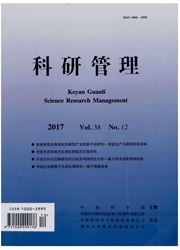

 中文摘要:
中文摘要:
对内蒙古地区1995-2011年能源碳排放结构及强度进行分析,运用偏相关性分析筛选出备选碳排放驱动因子,基于STIRPAT模型得出各个驱动因子弹性系数。根据弹性系数大小,选取前五个驱动因子作为预测参考序列构建GM (1,n)模型,对未来能源碳排放量进行预测。结果显示:碳排放量驱动因素中进出口总额、全社会固定资产投资、第二产业产值、GDP总额、人均GDP、第二产业产值所占比例是内蒙古地区能源碳排放正向驱动因素,并且驱动力从大到小排列;人口、单位G D P能耗对碳排放有反向驱动作用。内蒙古地区碳排量逐年增加,1995-2002年平稳增长,2003-2011年增长速度明显加快,预计2020年碳排放量将达到41505万t。
 英文摘要:
英文摘要:
This paper analyzes the structure and strength of energy carbon emission between 1995 and 2011 of Inner Mongolia. The alternative carbon emissions driving factor is selected by using partial correlation analysis;and the elasticity coefifcient of each drive factor is worked out based on STIRPAT model. This paper also predicts the future energy carbon emissions through selecting the ifrst ifve driving factor as forecasting reference sequence to build model-GM(1, N) according to the elastic coefifcient. The results shows that the total volume of imports and exports in the driving factors of carbon emissions, total investment in ifxed assets, the second industry output value, total GDP, per capita GDP, and the proportion of the second industry have been the constituents of Inner Mongolia’s positive driving factors of energy carbon emissions, and the driving force has ranged in order;while population and GDP energy consumption per unit has reverse driving effect on carbon emissions. Finally, this paper points out that carbon emissions in Inner Mongolia region keep increasing year by year. For example, between 1995 and 2002, it increased steadily;between 2003 and 2011, the growth accelerated signiifcantly. It is estimated that carbon emissions will reach 415.05 million ton by 2020.
 同期刊论文项目
同期刊论文项目
 同项目期刊论文
同项目期刊论文
 Comparative Study on Economic Contribution Rate of Education of China and Foreign Based on Soft Comp
Comparative Study on Economic Contribution Rate of Education of China and Foreign Based on Soft Comp 期刊信息
期刊信息
